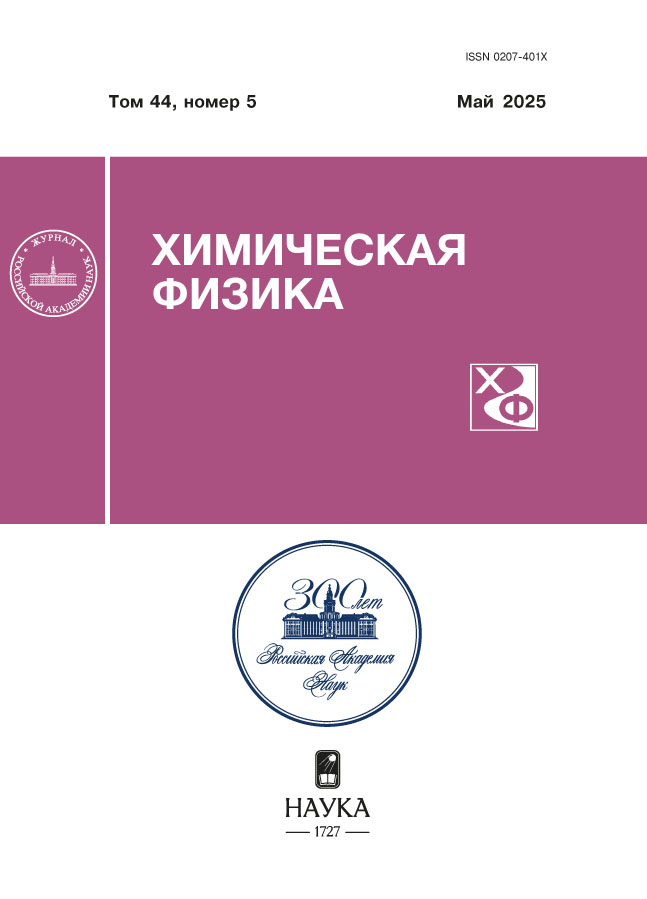Estimation of ionospheric disturbances caused by meteorological processes in the troposphere
- Авторлар: Borchevkina O.P.1, Nosikov I.A.1, Karpov I.V.1
-
Мекемелер:
- Kaliningrad Branch of the Pushkov Institute of Terrestrial Magnetism, Ionosphere and Radio Wave Propagation, Russian Academy of Sciences
- Шығарылым: Том 44, № 5 (2025)
- Беттер: 95-102
- Бөлім: Химическая физика атмосферных явлений
- URL: https://archivog.com/0207-401X/article/view/683918
- DOI: https://doi.org/10.31857/S0207401X25050114
- ID: 683918
Дәйексөз келтіру
Аннотация
Gravity waves (GWs) are one of the triggers of ionospheric disturbances that can influence ionospheric propagation of radio waves and the work of radio-technical systems. The paper considers the actual problem of estimating the response of the F2-layer of the ionosphere to the propagation of GWs from the meteorological storm region in the troposphere. The study is carried out by the numerical modeling method based on the solution of the ionospheric plasma diffusion equation taking into account the perturbation of the nEᵤtral wind under the GWs action. The amplitude of the perturbation was set based on numerical calculations of the physical model of the GSM TIP with inclusion of a realistic GWs source. The numerical estimates showed that the nEᵤtral wind perturbations in the thermosphere with a period of several hours lead to a significant decrease of the electron density and an increase of the maximum height of the F2-layer under geomagnetically quiet conditions.
Негізгі сөздер
Толық мәтін
Авторлар туралы
O. Borchevkina
Kaliningrad Branch of the Pushkov Institute of Terrestrial Magnetism, Ionosphere and Radio Wave Propagation, Russian Academy of Sciences
Хат алмасуға жауапты Автор.
Email: olga.borchevkina@mail.ru
Ресей, Kaliningrad
I. Nosikov
Kaliningrad Branch of the Pushkov Institute of Terrestrial Magnetism, Ionosphere and Radio Wave Propagation, Russian Academy of Sciences
Email: olga.borchevkina@mail.ru
Ресей, Kaliningrad
I. Karpov
Kaliningrad Branch of the Pushkov Institute of Terrestrial Magnetism, Ionosphere and Radio Wave Propagation, Russian Academy of Sciences
Email: olga.borchevkina@mail.ru
Ресей, Kaliningrad
Әдебиет тізімі
- Knížová P.K., Podolská K., Potužníková K. et al. // Ann. Geophysic. 2020. V. 38. № 1. P. 73. https.//doi.org/10.5194/angeo-38-73-2020
- Golubkov G.V., Adamson S.O., Borchevkina O.P. et al. // Chem. Phys. 2022. V. 41. № 5. P. 53. https.//doi.org/10.31857/S0207401X22050053
- Chou M.Y., Lin C.C.H., Yue J. et al. // Geophys. Res. Lett. 2017. V. 44. № 3. P. 1219. https.//doi.org/10.1002/2016GL072205
- Laštovichka J. // J. Atmos. Sol.-Terr. Phys. 2006. V. 68. № 3–5. P. 479. https.//doi.org/10.1016/j.jastp.2005.01.018
- Kshevetskii S.P., Kurdyaeva Y.A., Gavrilov N.M. // Chem. Phys. 2023. V. 42. № 10. P. 77. https.//doi.org/10.31857/S0207401X23100096
- Borchevkina O.P., Karpov I.V., Karpov M.I. // Atmosphere. 2020. V. 11. № 9. P. 1017. https.//doi.org/10.3390/atmos11091017
- Borchevkina O.P., Kurdyeva Y.A., Dyakov Y.A. et al. // Atmosphere. 2021. V. 12. № 11. P. 1384. https.//doi.org/10.3390/atmos12111384
- Jonah O.F., Kherani E.A., De Paula E.R. // J. Geophys. Res. A: Space Phys. 2016. V. 121. № 3. P. 2531. https.//doi.org/10.1002/2015JA022273
- Knížová P.K., Potužníková K., Podolská K. et al. // Front. Astron. Space Sci. 2023. V. 10. P. 1197157. https.//doi.org/10.3389/fspas.2023.1197157
- Kurdyaeva Y.A., Kshevetskii S.P., Borchevkina O.P. et al. // Geomagnetism and Aeronomy. 2022. V. 62. № 4. P. 537. https.//doi.org/10.31857/S0016794022040113
- Chernigovskaya M.A., Shpynev B.G., Ratovsky K.G. // J. Atmos. Sol.-Terr. Phys. 2015. V. 136. Part B. P. 235. https.//doi.org/10.1016/j.jastp.2015.07.006
- Zakharov V.I., Sigachev P.K. // Adv. Space Res. 2022. V. 69. № 1. P. 132. https.//doi.org/10.1016/j.asr.2021.09.025
- Bakhmetyeva N.V., Grigoriev G.I., Kalinina E.E. // Chem. Phys. 2023. V. 42. № 4. P. 73. https.//doi.org/10.31857/S0207401X23040039
- Hocke K., Schlegel K. // Ann. Geophys. 1996. V. 14. № 9. P. 917. https.//doi.org/10.1007/s00585-996-0917-6
- Bakhmetyeva N.V., Zhemyakov I.N. // Chem. Phys. 2022. V. 41. № 10. P. 65. https.//doi.org/10.31857/S0207401X2210003X
- Miyoshi Y., Fujiwara H. // J. Geophys. Res. 2008. V. 113. № D1. Article D01101. https.//doi.org/10.1029/2007JD008874
- Kurdyaeva Y.A., Bessarab F.S., Borchevkina O.P. et al. // Chem. Phys. 2024. V. 43. № 6. P. 91. https.//doi.org/10.31857/S0207401X24060105
- Ratovsky K., Klimenko M., Vasilyev R. et al. // Adv. Space Res. 2021. V. 67. № 1. P. 122. https.//doi.org/10.1016/j.asr.2020.10.021
- Vadas S.L., Crowley G. // J. Geophys. Res. Space Phys. 2017. V. 122. № 6. P. 6652. https.//doi.org/10.1002/2016JA023828
- Kurdyaeva Y.A., Bessarab F.S., Borchevkina O.P. et al. // Adv. Space Res. 2024. V. 74. № 5. P. 2463. https.//doi.org/10.1016/j.asr.2024.05.062
- Kurdyaeva Y.A., Borchevkina O.P., Golikova E.V. et al. // Izv. RAN. Ser. Fiz. 2024. V. 88. № 3. P. 481. https.//doi.org/10.31857/S0367676524030191
- Karpov I.V., Leble S.B., Smertin V.M. // Geomagnetism and Aeronomy. 1983. V. 23. № 4. P. 672.
- Karpov I.V., Leble S.B. // Izv. VUZ. Radiophys. 1983. V. 26. № 12. P. 1599
- Gershman B.N. Dynamics of Ionospheric Plasma. Moscow: Nauka, 1974. 257 p.
- Joyner K.H., Butcher E.C. // J. Atmos. Terr. Phys. 1980. V. 42. № 5. P. 455 https.//doi.org/10.1016/0021-9169(80)90005-7
- Handbook of Special Functions / Eds. Abramowitz M., Stegun I. Translated from English. Moscow: Nauka, 1979.
- Bilitza D., Altadill V., Truhlik V. et al. // Space Weather. 2017. V. 15. № 2. P. 418. https.//doi.org/10.1002/2016SW001593
- Namgaladze A., Korenkov Y., Klimenko V. et al. // J. Atmos. Terr. Phys. 1991. V. 53. № 11–12. P. 1113. https.//doi.org/10.1016/0021-9169(91)90060-K
- Bakhmetyeva N.V., Grigoriev G.I., Kalinina E.E. // Chem. Phys. 2022. V. 41. № 5. P. 441. https.//doi.org/10.31857/S0207401X22050028
Қосымша файлдар













